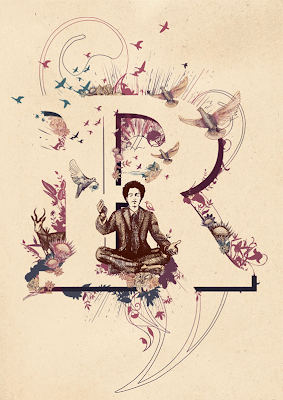Seven Ages of Britain
"The Age of Ambition"
It's just that time, in my research, to look up artists and movements that changed the whole face of modern art as we know it now. I watched this documentary, that followed David Dimbleby, to look through the mystical window to the past and also to look at modern day art/artists and ask the question, 'What art tells us about ourselves and our past?'. I was really hooked at the last 19 minutes of the one hour documentary, as it discussed modernist art, and how artists from that era thought how art should be shown to ordinary people, which changes the way how people see and feel about art now.
First were the unusual but very inspiring couple, Gilbert and George, or as they like to call themselves, 'Living Sculpture'. Their dance at the end was certainly entertaining!


I couldn't find the more explicit work by the living sculptures, which I honestly found more inspiring, but these examples sure do give a sense of how these two guys find themselves as living, breathing art, and want to show that to people. But the reason I like their explicit work much more interesting and definitely inspiring because what George and Gilbert want to show in their pictures is their interpretation of the question, 'what do I want to say to the world today?'. Their work certainly is confrontational, and that's what I love about it and also the fact about modern art, how(compared to art in the past) it is all about shock and outrage from the audience, since art in the past was all about beauty and craftsmanship. I guess that was just another goal for modernists, to think different, and be different.
Another thing about the living sculpture's work, is that it is very open, and it comes to terms with what people would think is disgusting and damn right shocking, and making them think that its completely normal to be open about yourself like that, which is definitely a point worth thinking about. The documentary goes on to expand this point and introduces Tracy Emin, who also does artwork that gets some serious heads turning.


But what seriously reached to me was the artist Anish Kapoor's wax work. The total size and vibrance of the work was what made it totally attractive, even though it was rather disgusting at first to look at.



The work reminds you of blood, guts and gore, with all the gooey red wax, falling down the wall and edges of door frames but it has a certain beauty to it, when looked at from a distance, I personally find it weird, yes, as it is unusual, but that is what makes it special, the highlight for me being the colour and just the scale of the whole art piece(the motorized wax block).
This documentary definitely showed me a whole new face of modern art, and it taught me how you should be free with your work, and to take risks, and do what you think is right, or for a change, do what is wrong, I mean, either way, you could end up with interesting and unexpected results!!





















































